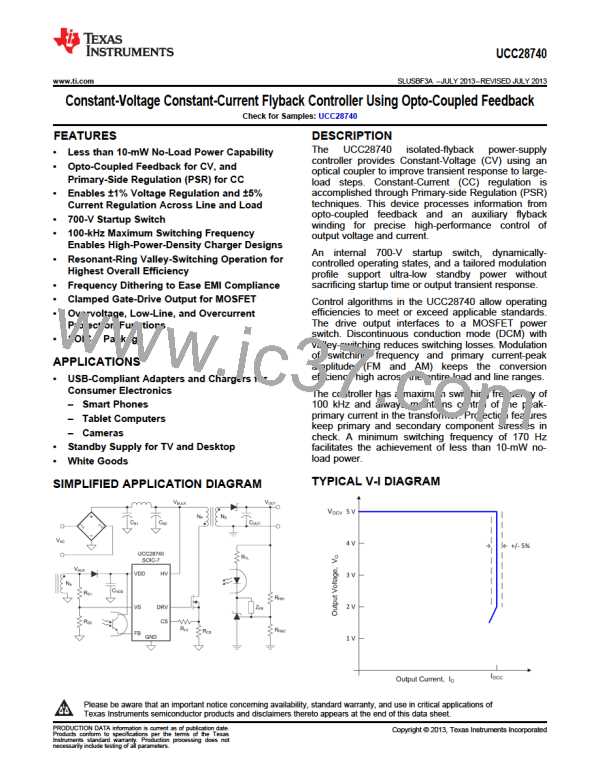UCC28740
www.ti.com
SLUSBF3A –JULY 2013–REVISED JULY 2013
VVDD(on) The UVLO turnon voltage (see ELECTRICAL CHARACTERISTICS).
VDSPK The MOSFET drain-to-source peak voltage at high line.
VF
The secondary-rectifier forward-voltage drop at near-zero current.
VFA The auxiliary-rectifier forward-voltage drop.
VLK The estimated leakage-inductance energy reset voltage.
VOΔ The output voltage drop allowed during the load-step transient in CV mode.
VOCBC The target cable-compensation voltage added to VOCV (provided by an external adjustment circuit applied
to the shunt-regulator). Set equal to 0 V if not used.
VOCC The converter lowest output voltage target while in constant-current regulation.
VOCV The regulated output voltage of the converter.
VOV The maximum allowable peak output voltage.
VOVP The overvoltage-detection level at the VS input (see ELECTRICAL CHARACTERISTICS).
VREVA The peak reverse voltage on the auxiliary rectifier.
VREVS The peak reverse voltage on the secondary rectifier.
VRIPPLE The output peak-to-peak ripple voltage at full-load.
AC Voltage Terms in VRMS
VIN(max) The maximum input voltage to the converter.
VIN(min) The minimum input voltage to the converter.
VIN(run) The converter startup (run) input voltage.
Efficiency Terms
η
The converter overall efficiency at full-power output.
ηSB The estimated efficiency of the converter at no-load condition, excluding startup resistance or bias losses.
For a 5-V USB-charger application, 60% to 65% is a good initial estimate.
ηXFMR The transformer primary-to-secondary power-transfer efficiency.
Copyright © 2013, Texas Instruments Incorporated
Submit Documentation Feedback
21
Product Folder Links: UCC28740

 TI [ TEXAS INSTRUMENTS ]
TI [ TEXAS INSTRUMENTS ]